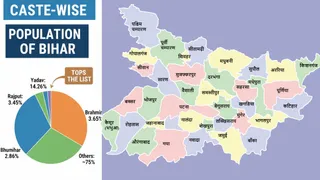- By Ridam Sharma
- Thu, 06 Nov 2025 06:12 PM (IST)
- Source:JND
Top 10 Driest Countries In The World: Driest nations in the world, those that witness the least amount of rainfall (Precipitation) every year. Not a surprise, most of these driest countries in the world are situated across North Africa and the Middle East, due geographical positioning of these regions, which led to arid desert climate conditions with extremely low average annual rainfall. These geographical locations also affect the climatic conditions, culture, and resource management here. Here is a list of the top 10 driest countries in the world, by their average annual rainfall in millimetres, according to the Visual Capitalist report and the World Bank report.
Which Are The Top 10 Driest Countries In The World?
| Rank | Country | Average Annual Precipitation (mm) |
| 1 | Egypt | 18 |
| 2 | Libya | 56 |
| 3 | Saudi Arabia | 59 |
| 4 | Qatar | 74 |
| 5 | UAE | 78 |
| 6 | Bahrain | 83 |
| 7 | Algeria | 89 |
| 8 | Mauritania | 92 |
| 9 | Jordan | 111 |
| 10 | Kuwait | 121 |
Source: World Bank And Visual Capitalist
List Of The Top 10 Driest Countries In The World:
1. Egypt
Egypt is the driest country in the world, with an average rainfall of only 18 mm per year. This is due to the desert climate, which keeps this transcontinental nation extremely dry, with most rainfall occurring infrequently along the Mediterranean coast. Additionally, this is the reason why Egypt is highly dependent on the Nile River as a water resource and for agricultural purposes.
2. Libya
Libya is an arid country, with an average annual rainfall of just 56 mm, mainly due to the Sahara Desert and the Mediterranean Sea. The dry situation is better in coastal regions in the winter months, while the interior deserts stay dry and hot throughout most of the year. Periodic droughts and inconsistent rainfall patterns make things worse.
Recommended For You
3. Saudi Arabia
Saudi Arabia receives around 59 mm of rain annually, which is mostly due to infrequent winter rains which last only for a few minutes. The nation also comprises large desert areas, like the Rub al Khali, which also contribute to the harsh dry climate here.
4. Qatar
Qatar receives an average annual rainfall of 74 mm. Qatar also witness long, scorching summers and short, mild winters, with most of its rainfall occurring in the winter months. Lack of natural fresh sources, Qatar depends greatly on seawater as it uses it after removing salt from there and fossil aquifers.
5. United Arab Emirates
The UAE receives about 78 mm of rainfall every year. Water scarcity in the United Arab Emirates is working hard towards advanced technologies and sustainable practices within urban development and agriculture.
6. Bahrain
Bahrain is a small island country in the Persian Gulf and receives about 83 mm of annual rainfall. This nation also belongs to the arid category with a lack of many water resources, which is why the country highly depends on desalination (removing salt) plants and conservation of water for significantly saving water.
7. Algeria
Algeria is widespread across the Sahara Desert and witnesses an average rainfall of 89 mm. Here, the northern place gets more amount of rain due to Mediterranean weather systems. On the other hand, the deserts in the south are arid, with very high temperatures and low humidity.
Also Read: Top 10 Hottest Countries In The World Where Temperature Hits Extreme Levels
8. Mauritania
Mauritania is mainly within the edges of the Sahara Desert and records an average rainfall of about 92 mm. The nation mostly experiences hot desert conditions with scattered rainfall in the southern part.
9. Jordan
Jordan receives approximately 111 mm of rainfall per year. Due to its varied topography, some parts receive relatively more rain, while most other areas are arid deserts. Jordan has a scarcity of water resources, which makes it important for the government to spread awareness about reusing water, along with desalination technologies.
10. Kuwait
Kuwait concludes the list of the top 10 driest nations in the world, with around 121 mm of yearly rainfall, which mostly happens during the winter season. Its desert climate is all about hot summers and mild winters, which cause limitations for the vegetation.
The above-mentioned list of the top 10 driest nations in the world showcases environmental dilemmas in conditions of extremely low annual precipitation. These driest nations are still making efforts and moving towards technology for the welfare of people through modern methods of water management, like desalination.





-1762416481426_m.webp)